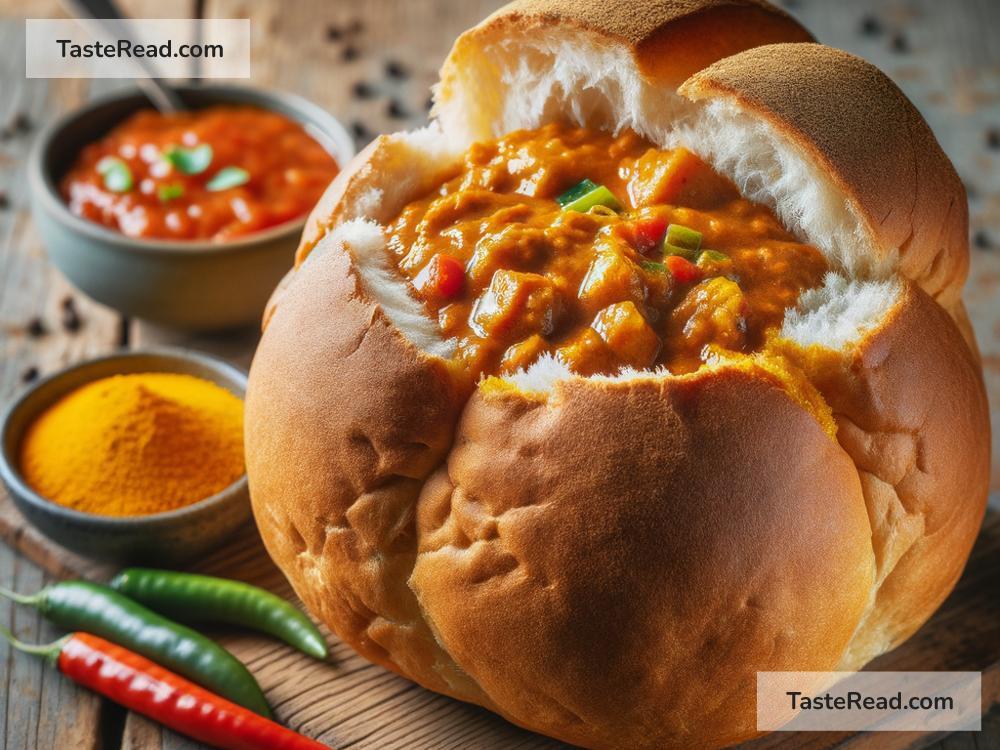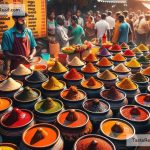Exploring the Bold Flavors of South African Bunny Chow
Food often tells the story of a place, its people, and their history. One such captivating tale is served in the form of Bunny Chow, a South African street food that has made a name for itself far beyond the borders of its origin. It is a dish that embodies the vibrant culture, the diversity, and the spirit of innovation found within South Africa. Let’s dive into the world of Bunny Chow and uncover the bold flavors that make it a must-try for any food enthusiast.
Origins of Bunny Chow
Bunny Chow originated in the Indian community of Durban, South Africa, during the 1940s. Although its creation is attributed to a few different tales, the most popular one tells the story of Indian laborers who needed a convenient way to carry their lunches to work. They found an innovative solution by hollowing out a loaf of bread and filling it with curry, thereby creating a portable and hearty meal. The name “Bunny” is thought to derive from “banya,” a term for Indian merchants in South Africa, while “Chow” simply means food.
The Bold Flavors
At its heart, Bunny Chow is a celebration of flavors. The dish starts with half or a quarter of a loaf of white bread, hollowed out and filled with rich, spicy curry. The curry can be made from a variety of meats, including chicken, beef, lamb, or even vegetarian options like beans or lentils. What sets Bunny Chow apart is the distinctive South African Indian curry, known for its deep, complex flavors and a generous use of spices like turmeric, cumin, coriander, and garam masala, which provides a warmth that is both invigorating and comforting.
The magic of Bunny Chow is in the amalgamation of tastes and textures—the soft, fluffy bread soaking up the robust, fiery curry, leading to a flavor explosion with each bite. It’s not just a meal; it’s an experience, a journey through the richness of South African Indian cuisine.
Enjoying Bunny Chow
Eating Bunny Chow is an art in itself. Traditionally, it is a dish best enjoyed with your hands. The hollowed-out bread serves as a bowl, and as you eat, you tear pieces of the bread to scoop up the curry. It’s a messy affair but immensely satisfying. The remnants of bread soaked in curry sauce are often considered the best part of the meal.
If you’re making Bunny Chow at home, the key is in the curry. Begin by sautéing onions, garlic, and ginger, then add your choice of meat or vegetables. Once browned, incorporate a generous amount of spices, followed by tomatoes and water or stock, and let it simmer until everything is cooked to perfection. Fill your bread bowl with this fragrant curry and get ready to enjoy a piece of South African culinary history.
Beyond the Taste
Bunny Chow is more than just a delicious dish; it is a symbol of South Africa’s multicultural heritage. It represents resilience, innovation, and the fusion of different cultures. Its very existence speaks to the adaptability and creativity of the Indian community in South Africa, and how food can serve as a bridge between different cultural identities.
For travelers and foodies alike, seeking out Bunny Chow is a way to connect with South African culture, to taste its history, and to celebrate its diversity. Each bite tells a story of migration, adaptation, and the enduring power of food to bring people together.
In recent years, Bunny Chow has gained international recognition, popping up in food markets and restaurants around the world. Its appeal lies in its simplicity, its depth of flavor, and the joy of eating something so genuinely tied to a place and its people.
Conclusion
Bunny Chow is a testament to the dynamic culinary landscape of South Africa. It challenges the palate with its bold flavors and offers an immersive experience into the country’s rich cultural tapestry. Whether you have the chance to enjoy Bunny Chow on the streets of Durban or decide to bring a taste of South Africa into your own kitchen, this dish is sure to leave a lasting impression. So, dive in, get your hands dirty, and savor the vibrant, hearty, and utterly unique experience that is Bunny Chow.


